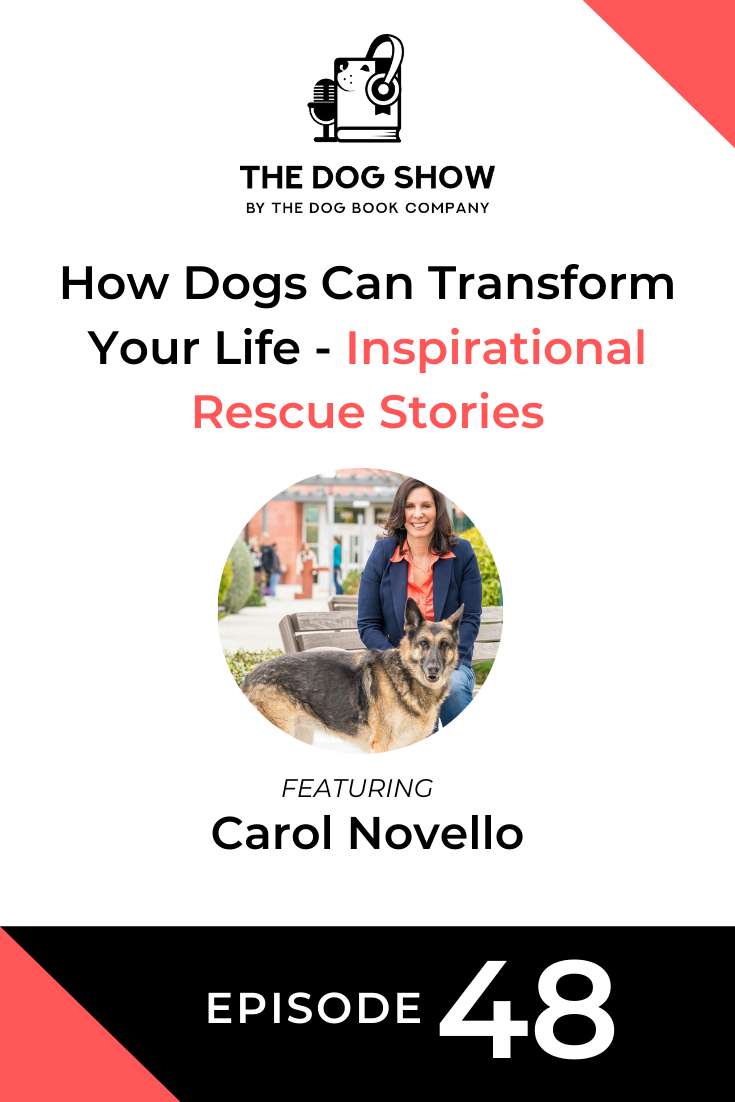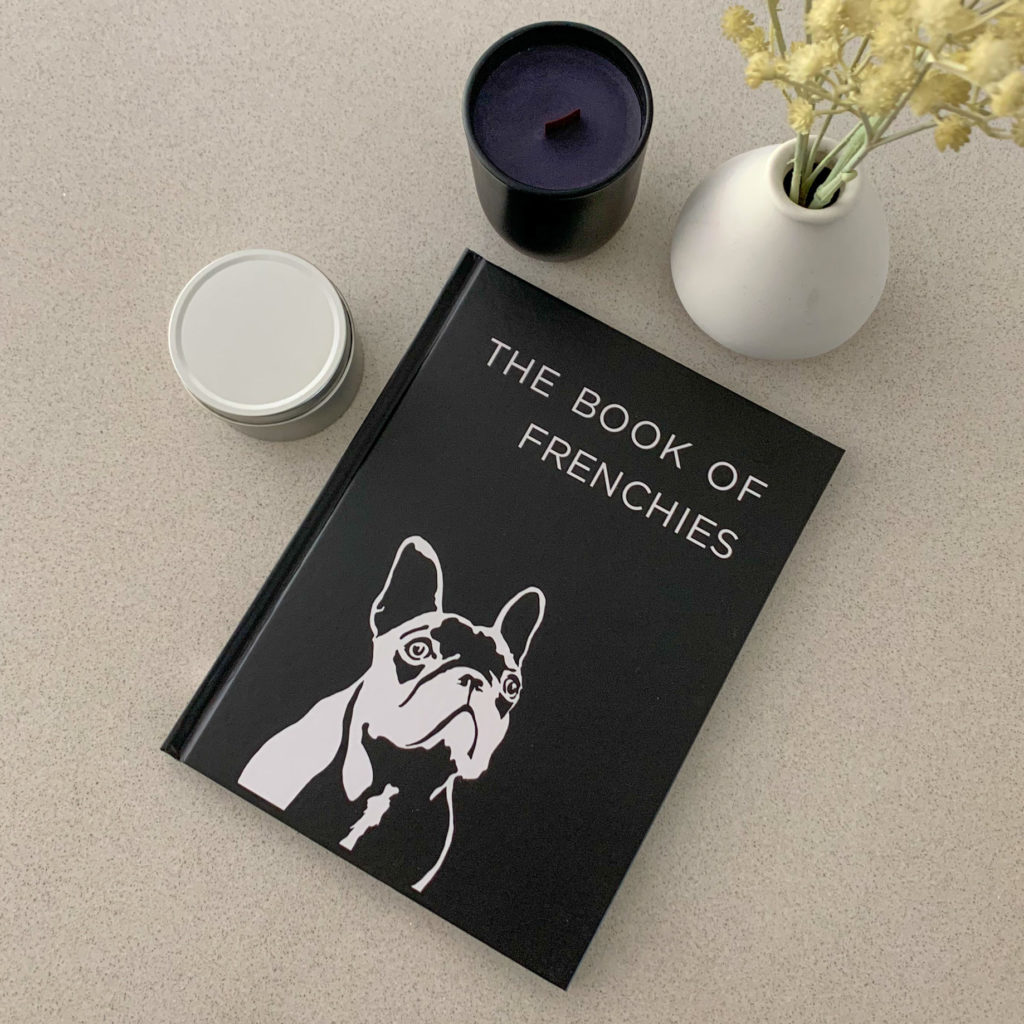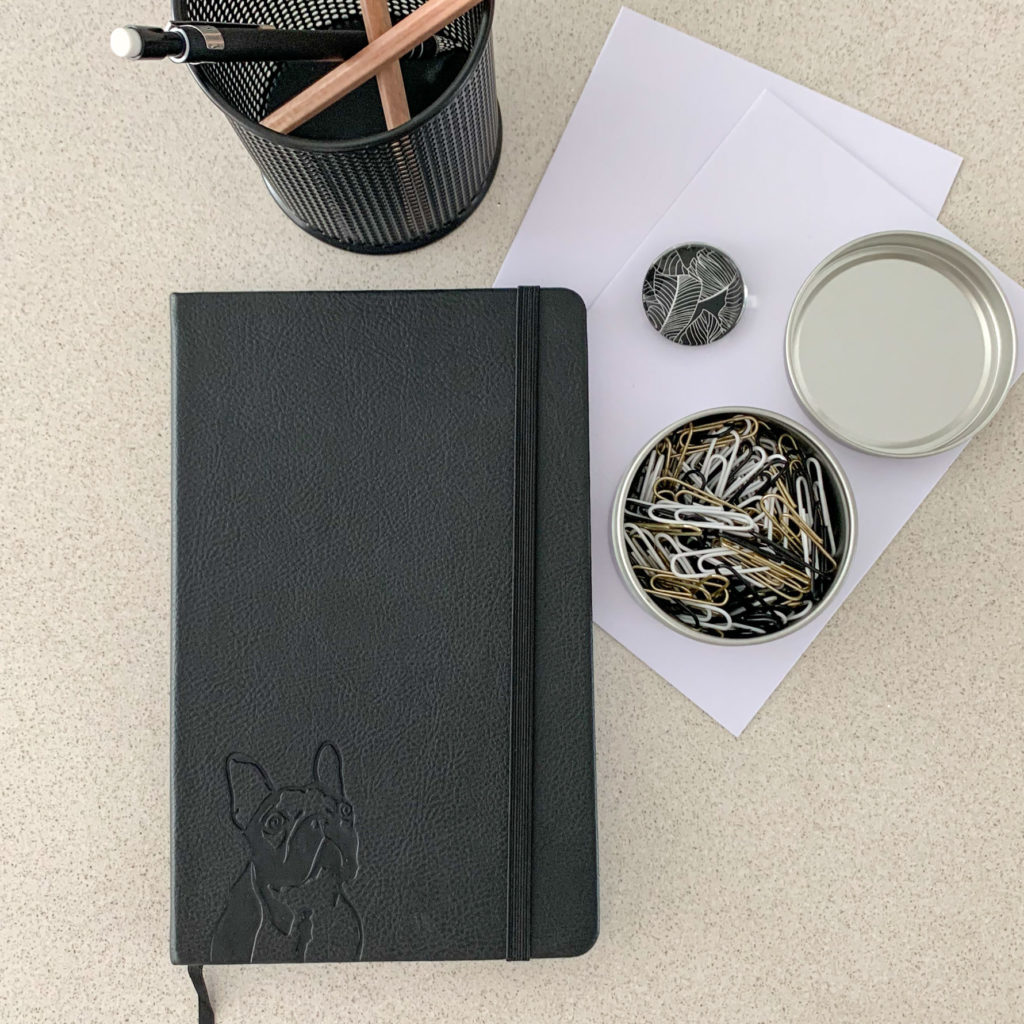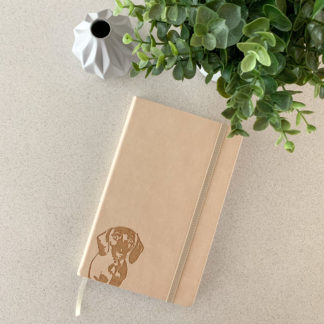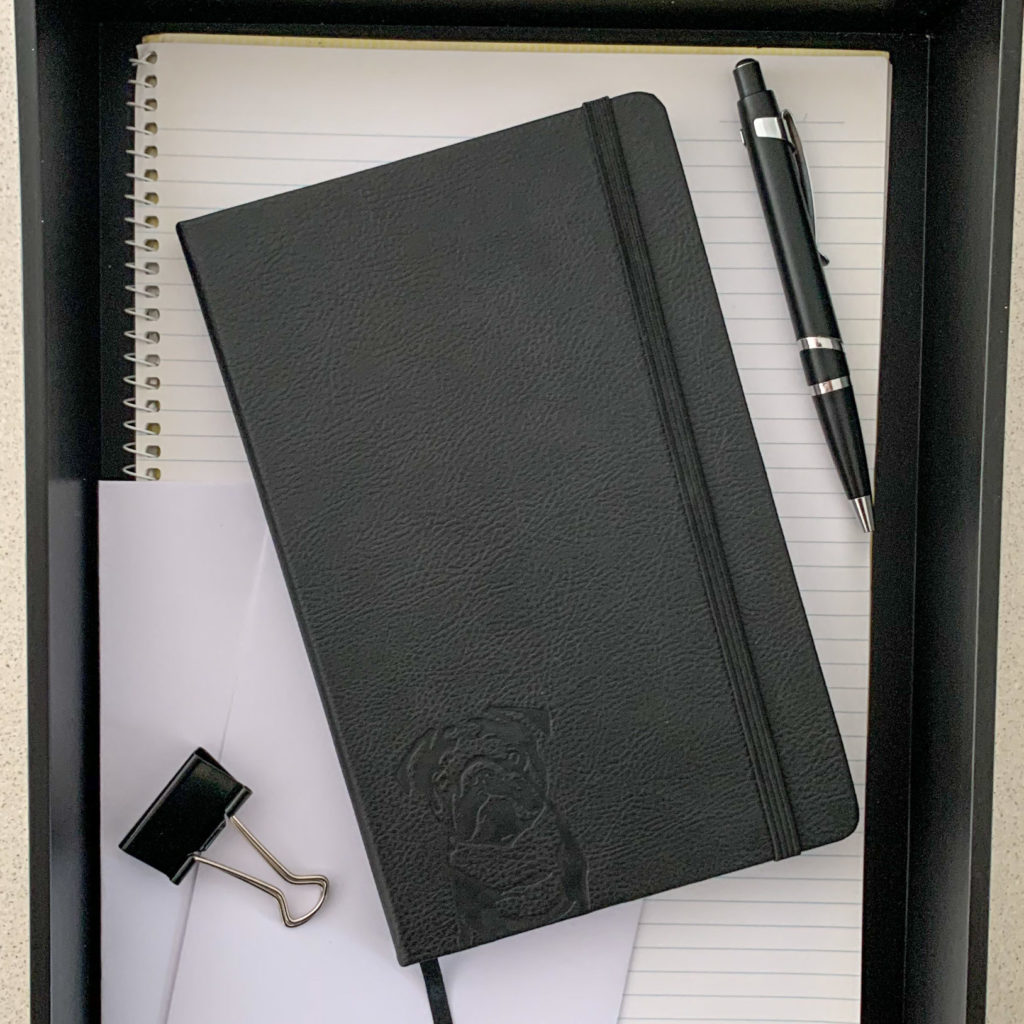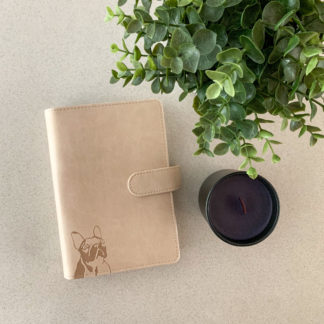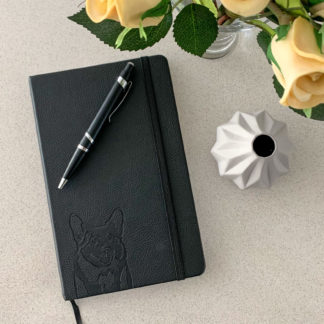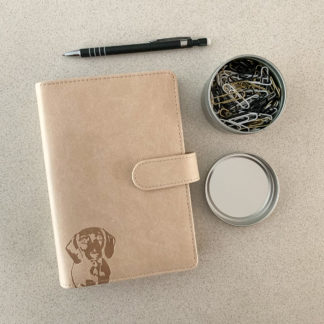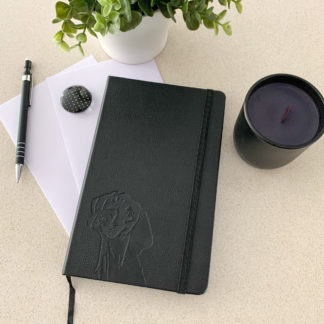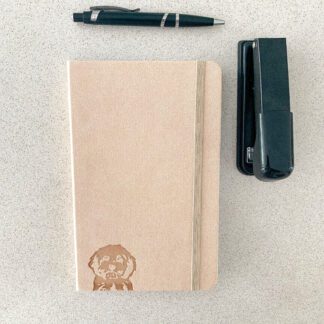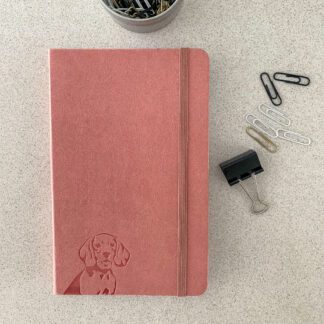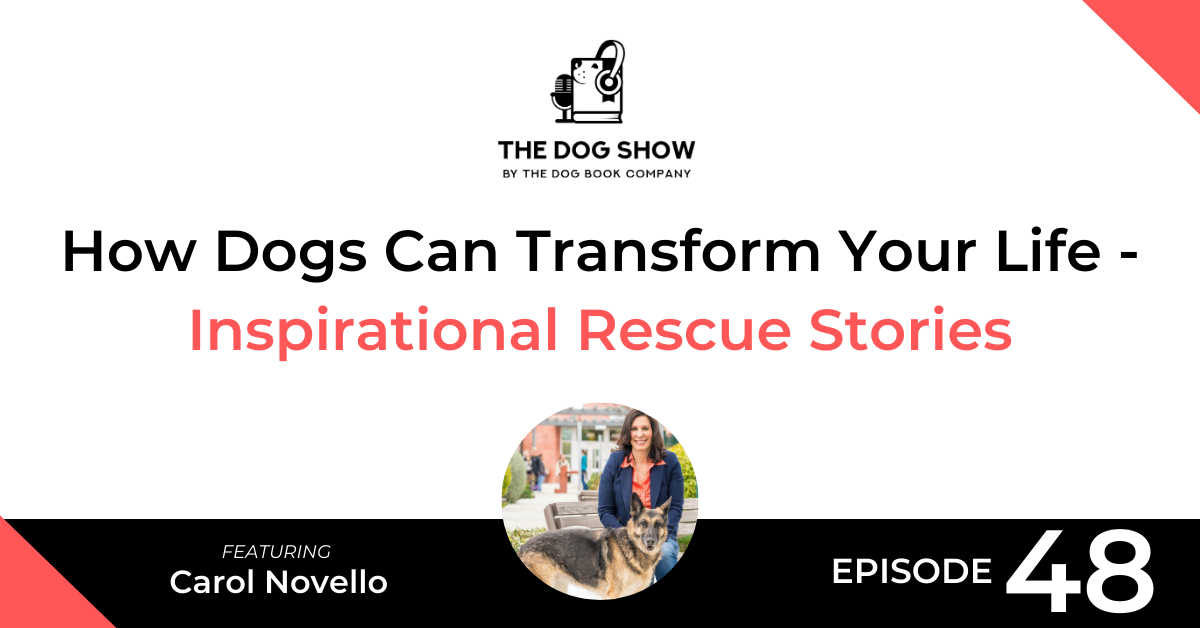
Did you know that dogs can have a positive influence on your mental and physical wellbeing?
In this episode of The Dog Show, Carol Novello and I discuss how scientific research demonstrates that dogs have a positive effect on people’s mental and physical health through a range of inspirational real stories.
Carol is the founder of Mutual Rescue, an organization that shares compelling, true stories that demonstrate when people adopt animals, their own lives can be dramatically transformed in positive and often unexpected ways. Their inspiring short films have been viewed over 153 million times and their mission is to change the conversation from people OR animals to people AND animals. Because when we support our animals they support us.
Find out more about Mutual Rescue here:
Listen
Watch
Read
Will: This episode of “The Dog Show” features Carol Novello. Carol is the founder of Mutual Rescue, an organization that shares compelling, true stories that demonstrate when people adopt animals, their own lives can be dramatically transformed in positive and unexpected ways. Their inspiring short films have been viewed over 153 million times.
And their mission is to change the conversation from people or animals to people and animals. Because when we support our animals, they support us. In the interview, we discuss how scientific research demonstrates that dogs have a positive effect on people’s mental and physical health through a range of inspirational real stories. Carol, welcome to “The Dog Show” today. Thank you so much for coming on.
Carol: Thanks, Will. It’s great to be here.
Will: Yeah. So tell me why would a senior executive from Silicon Valley with a Harvard MBA, live here to carry out to start a rescue organization?
Carol: Well, it is kind of a crazy question, isn’t it? It definitely happened by accident, that’s for sure. I actually had a wonderful career in high-tech for many years and decided to take a step back. And at that point, I didn’t really know what I was going to do. I thought I might go back into tech. But I ended up becoming president of Humane Society Silicon Valley, which is an amazing animal welfare organization.
And what was so interesting about becoming president of that organization is that people would sometimes ask me, “Why are you helping animals when you could be helping people?” Now, I thought that was a pretty curious question. And I realized that we needed to be doing more to help people understand just how impactful animals are in our lives. And that when we’re supporting animal welfare organizations and the animal welfare cause in general, that we’re also helping people.
So I really wanted to change the conversation from people or animals to people and animals. And that led to the creation of Mutual Rescue in an effort to do just that, by telling authentic stories, and really creating an experience for people at a very visceral level that they would begin to understand that and understand at a deeper emotional level about how animals are impacting people.
Will: Yeah. It’s a really interesting intersection. And that was the…that was the kind of message that I got when I was looking at Mutual Rescue, was that intersection between…it wasn’t about animals, or animal welfare, or human welfare, it was that intersection and how powerful, you know, both sides of the coin can have an impact on each other’s lives.
Carol: Yeah, exactly. There’s huge benefits to both animals and people. And one of the studies that I talk about in my book that I love so much is that the researchers have shown that it’s not just people that are having a reaction, like when you’re interacting with an animal, and you’re having a positive experience, and you’re releasing serotonin, and prolactin, and oxytocin…this particular research was done with dogs…but it’s showing that dogs were having similar physiological reaction in their body as well. So it truly is a mutual experience.
Will: That’s interesting. That’s interesting. So with Mutual Rescue, can you give me kind of the elevated pitch of what it is? I know it’s not really a pitch, but kind of the overview of what it is and how it kind of all materialized?
Carol: Sure. So it really…it’s a national initiative at the highest level to change the conversation from people or animals to people and animals. And there’s three pillars that make up this initiative. The first is storytelling that we do through short films and through the book. And that really helps make it very real for people. We also then have a second pillar that we call engagement, which is about supporting various programs within the communities all across the country that help bring animals and people together.
So we don’t create those programs ourselves. What we do is we collaborate with other shelters and rescue groups to come up with a toolkit that then makes it possible for programs to get implemented more quickly, and then make awareness of those programs to happen at a national level even though you’re going to your local shelter.
So our first program there was something called Doggy Day Out, where people can go to their local shelter and take an animal out for just an afternoon to get some exercise and some fresh air. It’s good for the human. It’s good for the animal. And we’re working on a new pilot program right now around pet pantries, which I’m excited about, that’ll be coming out in the next few months.
And then the third pillar is actually corporate sponsorships. So one of the things about corporate sponsorships in the animal welfare sector is, because there’s a couple of large national organizations and, you know, they’re doing great work, there’s something to take away from them, but a lot of people think they’re giving to a national organization, and that’s going to help local animal welfare in their community. And that’s not the case.
Humane Society ASPCA or excuse me, an SPCA, those are just generic terms for an animal welfare organization. So we wanted to create a national brand, so to speak, that essentially could attract a corporate sponsorship that wants national coverage and national awareness. But then, the money that gets donated would actually get distributed out to local shelters and rescue groups, really, to the front lines, where the rescue work is actually happening.
So we just had a really lovely donation from Dutch Bros Coffee back in the fall, and we were able to do 10 $10,000 gifts to shelters and rescue groups that were in a geographic footprint of Dutch Bros. So we’re excited about the possibilities to combine authentic storytelling, authentic content with engagement, with corporate sponsorship, to create something very new in the animal welfare space.
Will: The Doggy Day Out that you mentioned, how influential can those small kind of, I guess micro-interactions be for the dog and the human compared to, you know, full adoption?
Carol: Well, what’s great about it is that it helps the dogs get adopted more quickly. One of the very first shelters in the country to implement a Doggy Day Out program was actually Fredericksburg, XPC…SPCA, in Fredericksburg, Virginia. And they saw a 20% increase in their adoptions, because of the Doggy Day Out program. The dogs are just getting greater visibility and more opportunities for interaction.
They also get an opportunity to blow off some steam, so that helps kind of release some of their stress by getting them out of, you know, just being in their kennel or in their situation within the shelter. And the other thing that’s just super fun about it is that you as a human are interacting with that animal. And even if you’re not in a position to adopt that animal, you now have created a connection.
And so people are going on social and they’re posting their pictures, and they’re talking about what an awesome dog and a day, you know, a great day they had with that dog. And that helps get the dogs more visibility and helps them get adopted more quickly. So it’s not adoption…it’s not doggy day out or adoption, it’s actually just one more tool in the toolkit around helping animals get adopted more quickly from shelters.
Will: Yeah, and I guess it just increases the awareness as well among the general public.
Carol: Yeah, exactly, exactly.
Will: So how do you go about breaking down the perceptions people have? As you mentioned earlier, it’s kind of like some people probably have that perception of human welfare and animal welfare kind of as separate things. How do you break down those perceptions other than all this great stuff you’re doing? Is there an education piece there for people? Potentially people that aren’t necessarily animal people, but maybe struggling with, you know, body or mind issues in their lives and could benefit from something like this.
Carol: Well, I talk a lot about that in my book, “Mutual Rescue,” which is to bring in the science to augment the stories. So the films, the short films that we’ve created, they’re only five or six minutes, I think, really help people understand at a visceral level, you know, the impact that animals can have in a variety of human conditions. So the film’s cover topics from obesity, to autism, to addiction, to suicide, I mean, a whole range of things.
And you see the impact that it has on that one individual person. But in the book, I bring in research that talks about, you know, this isn’t just a one-person, one-animal interaction that’s happening, there’s actually, you know, trends and data that says, “Yes. You know, animals can help you lose weight. They can help you become more active. They can play a big role in your mental health,” and that kind of thing.
So all of that I think is really important in terms of helping people understand that it’s, again, it’s that intersection of humans and animals, it’s really important. The other thing that I have also, you know, learned having been in this sector for over a decade now, is that there really is a…is a strong connection between what happens to humans, therefore affects animals.
And so if you actually…you know, I’ve heard a lot of people in animal welfare, you know, the flip side to saying, “Oh, well, there’s people that they don’t care about animals and you should care about animals because they help people.” On the flip side, there’s some people in animal welfare that are, like, “I’d rather just not deal with people, I only want to concentrate on the animals.”
And in fact, if you want to help the animals, you have to help the people too. And one of the things that was really interesting when I was at Humane Society Silicon Valley, we looked at the data of where animals were coming from. And what we learned is that of all of the dogs that were coming into the Silicon Valley shelters, 30% were coming from five ZIP Codes. And those were ZIP Codes that were lower-income, that didn’t have as much access to care.
And so, you know, one of the things is, we need to look at human poverty and human circumstances in order to better the lives of animals. And, you know, people with all economic incomes, can, you know, surrender animals. So that’s not to say, you know, I’ve also heard this bias, “Oh, you know, if you can’t…you know, you shouldn’t have a pet if you, you know, if you don’t make enough money,” or that kind of thing.
And in fact, a lot of cases, people are inspired to take better care of themselves and earn more money because they want to be able to take care of their animal, like, that’s a bigger driver. But access to care and those kinds of things that are important on the human side, they start to overlap with animals as well.
So we need to not look at these things separately, we need to look at how they come together. And I believe there’s going to be a big trend in the next decade of the intersection between human services and animal services. And you’ll see more of those kinds of things getting addressed.
Will: Interestingly enough, though, wouldn’t a lot of the animals that have ended up in rescue organizations or shelters, be there because of, you know, humans unable to look after them in the first place, though?
Carol: Well, sure. But that’s a scenario where what are the reasons behind that? And therefore, what is it that we need to do to support the people so they can better support their pets. So there’s a lot of different examples. So the first one is, you know, just how important spay and neutering is. Because if you’re not spay and neutering your pet, and your pet gets pregnant, now, all of a sudden, instead of having one animal or two animals to feed, you now have 12. So that’s a big difference.
So, you know, making sure that people have access to spay and neuter, that they know about it, that’s a huge component. There’s other scenarios where, you know, people are taking great care of their pets, but they just fall on hard times. And that’s where things like a pet pantry can make a difference so that you don’t have to make a decision between, you know, feeding your pet versus feeding your children that you’re able to get through that.
But then other folks, you know, sometimes are thinking through what it means to have a pet. And so, you know, you may have, you know, just someone who’s working all the time, and they’re not able to care for the pet and so they make a decision to surrender the pet. And so it’s always a big decision. And there’s a lot of factors that can influence that. So, you know, we always want to encourage people, yes, animals can add so much to our lives and it’s a…it’s a big responsibility, too. So you need to take that into consideration.
Will: Yeah, I guess that’s what I was leading to is that, whilst, you know, adopting a pet could have a transformative effect on your life and the pet’s life, you’ve got to be in the right position to be able to do that as well.
Carol: Yeah, absolutely. Yeah, absolutely.
Will: So can you share a couple of stories? You’ve captured all these amazing stories under “Mutual Rescue.” I was kind of caught a bit of a YouTube vortex earlier watching a few. But do you have a couple maybe dog-related ones that you could share, which will give people an insight into what’s in the book and what’s, you know, on the website?
Carol: Sure. So Mutual Rescue actually kicked off with our very first video. We didn’t really know…we didn’t know we were going to be starting this national initiative. We had just started out wanting to help better explain why helping animals helps people. And I had been sharing Eric O’Grey’s story out in the community. Eric had adopted Peety from Humane Society Silicon Valley at the recommendation of his doctor who said to him, “You know, look, go adopt a shelter dog, walk him a half an hour every day.”
And Eric did that and he lost over 140 pounds. And so, I was sharing that story because it was just so moving and so transformational. And I was introduced to a creative producer, and he really wanted to do something with animals. And he coined the phrase Mutual Rescue. And so we did our first video of Eric and Peety. So it takes you through the story of when he hit a low point with his weight.
He had a bad experience on an airplane where someone was upset with him and that caused him to really reassess his life, and he went to go see this new doctor. The doctor recommended he adopted a dog, and he did and he lost that weight with Peety. And then he went on to start running marathons because he just started to believe in himself and felt like he could do it because he felt like Peety believed in him.
So that was the Mutual Rescue dog story that kicked it all off. Another super fun…it’s not in the book, but it is on the Mutual Rescue website, is Mike and Abbie. And that’s a fabulous story about a man who really kind of all parts of his life caved in on him. He lost his job. He lost his house. He lost his fiance. It was kind of a triple whammy. And he ended up adopting a shelter dog.
And she had been through a lot of trauma herself. She’d been…she was abandoned on a busy highway and a good samaritan had rescued her. And so, she had a lot of trauma to sort through on our own. And the first year, he just kind of, you know, worked to try and get her, you know, more comfortable. And just through happenstance, they were swimming in the ocean together and he asked a surfer that was nearby, like, “Hey, do you mind if my dog, like, rests on your board for a minute?” because they were out swimming.
And next thing, you know, this wave came in, rather than getting freaked out, Abbie stood up on the board. And so he just, like, pushed her gently into the wave and she rode it all the way into shore and was, like, “Oh, my God, that was so fun. Let’s do it again.” And she’s now gone on…she holds the Guinness Book of World Records for the longest wave surfed by dogs.
Will: Wow.
Carol: So, I mean, I think the other thing that I love about these stories in the context of not just the human and the animal transformation, but for me, you know, especially, like, I look at Abbie, and she’s a role model. I mean, she’s just inspiring, in the context of, you know, thinking about the amount of trauma that she had to have experienced being abandoned on this highway dodging, you know, semi-trailers, and just being so freaked out.
And then, just, you know, finding this joy and his purpose in surfing and being with her human, and the resilience that she showed in bouncing back. I think it demonstrates that, you know, we all deserve our own second chances. And I think that’s really inspiring.
Will: Yeah. Eric and Peety was one of the videos I watched. And I think one of the things I loved about that story and a couple of the others that I watched was, I guess, even if you’re not specifically experiencing the things that they are experiencing yourself, you can draw inspiration for that. I drew inspiration from that story because there’s certain things that they’re going through in their life, which you can resonate with and go, “You know what, that’s…maybe that’s something that I’m experiencing as well.” So that was really powerful for me.
Carol: Yeah. I think, you know, whenever you have a friend with you on the journey, it makes the journey somehow easier. And in a sense, that’s one of the things that animals do for us.
Will: I think as well, like, the examples of those stories, it was, like, “Okay. I’ve reached a point of challenge in my life. And now, you know, I’ve overcome that with the animal.” And there’s also the sense that and I’ve experienced this in my life personally when you might…you might get an animal when you’re in a great spot in your life and the animal, you know, you get is in a great spot as well. But then eventually, there’s going to be bumps in the road. And it’s those moments as well with it, where you can kind of having that companionship is amazing.
Carol: Yeah. And I think, you know, a lot of the films that we do are highlighting, you know, someone who’s in a situation and they, you know, adopt an animal and it changes their life. But, you know, there’s so much joy that animals bring into our life. It doesn’t have to be that dramatic. But if it’s not dramatic, it doesn’t make for a good, short film. So, you know, like, “Hey, I’m super happy. And I went and I adopted this great animal, and we’re going out for walks every day, and we feel great.” Well, that’s awesome, but, you know, you’re not going to watch that on YouTube, so…
Will: Well, the production value is really on point with all your videos as well. I mean, it was like watching a Hollywood trailer, so…
Carol: Thank you. Yeah. We have…I’ll just give a shout-out to our filmmakers, Tecktonik [SP]. They’re in Chicago. They’re amazing. And we were just so fortunate to team up with them early. And they really understood what we wanted to create, and they’ve just been tremendous partners in storytelling, and getting the message out.
Will: They’ve done a great job. Okay. So the books called “Mutual Rescue: How Adopting a Homeless Animal Can Save You, Too.” So you want to give me a quick overview of, number one, where people can get the book but also what’s in the book? I believe there’s kind of four areas that you discuss.
Carol: Yeah. So the book is available, you know, in all the usual places. You can buy it online, Amazon, Barnes & Noble, Indie Books, new bookstores. It’s been released in the U.S. as well as in Germany, and Italy. And so pretty easy to get your hands on it. The book is divided into four sections, heart, body, mind, and connection. And each of those sections covers various aspects of the human condition and certain situations.
And then has both stories of people that have experienced that situation and the research to then say, “You know, here’s what’s happening to you inside your body, or emotionally, or mentally, or whatever.” So it brings all those pieces together. So, you know, we cover in the heart section, we talk about building trust, and some of the interesting psychological constructs that we have as humans and how animals play into that.
Building resilience and overcoming challenges, and things like that. In body, we talk about things related to physical health, such as, you know, heart. We talk about addiction. We talk about how do you come back from physical trauma. In mind, we talk about things like, you know, grit and children’s development. And in connection, we talk about relationships, and how animals can really bring such an interesting and richness to our relationships.
In one of the films that we released recently called Bhuvana & Abhishek & Lollipop, it’s a story…I know this is a dog show, but it was a story about how a cat actually saved their marriage. And I think that’s really pretty, pretty amazing when an animal can help you get closer to humans, it creates a bridge in a way when you have difficulty connecting with one another. It can happen through the animal.
Will: I just realized your book is actually sitting on a…on…behind you as well.
Carol: Yes.
Will: For anyone that’s watching on YouTube, they can see that there. Nice product placement. So where’s the best place for people to go to find out more about Mutual Rescue and everything you’re doing?
Carol: Yeah. So you go to MutualRescue.org on the web. You can see all of our short films are there. You can learn more about the book. You can find our Doggy Day Out directory if you are an organization that wants to start a Doggy Day Out program, you can download the Doggy Day Out toolkit.
If you’re interested in sponsorship, we’ve got a section there about our full backstory and how you can contact us. And then, if you want to find out about any of our new programs, just sign up for our email list. As I said, we’re working on a new program to support pet pantries across the country, and we’re looking forward to rolling that out. So there’s definitely more to come from Mutual Rescue.
Will: Right? Well, Carol, thank you so much for coming on “The Dog Show” today. I highly recommend at a minimum that people jump on your website or your YouTube channel and watch a couple of the stories because they’re very inspirational. And if we can inspire at least one person out there to make a change in their life and, you know, connect more with the pet or their current pet then, I think it’s been worthwhile.
Carol: Terrific. Well, thank you. It’s been a real pleasure to be on the show, Will.
Will: Thank you.
From Our Store
-
French Bulldog Coffee Table Book – The Book of Frenchies
From: AUD $59.99 Add to cart -
Dachshund Coffee Table Book – The Book of Dachshunds
From: AUD $59.99 Add to cart -
Pug Coffee Table Book – The Book of Pugs
AUD $59.99 Add to cart -
French Bulldog Notebook – A5, Hardcover, PU Leather, 100gsm Lined Pages, Bookmark (Three Colours)
AUD $34.99 Select options -
Dachshund Notebook – A5, Hardcover, PU Leather, 100gsm Lined Pages, Bookmark (Three Colours)
AUD $34.99 Select options -
Pug Notebook – A5, Hardcover, Black PU Leather, 100gsm Lined Pages, Bookmark (Three Colours)
AUD $34.99 Select options -
French Bulldog Planner – PU Leather Exterior, Metal Loose Leaf Ring Binder, 100gsm Paper (Two Colours)
AUD $64.99 Select options -
Corgi Notebook – A5, Hardcover, Black PU Leather, 100gsm Lined Pages, Bookmark (Three Colours)
AUD $34.99 Select options -
Dachshund Planner – PU Leather Exterior, Metal Loose Leaf Ring Binder, 100gsm Paper (Two Colours)
AUD $64.99 Select options -
Vizsla/Weimaraner Notebook – A5, Hardcover, PU Leather, 100gsm Lined Pages, Bookmark (Three Colours)
AUD $34.99 Select options -
Cavoodle Notebook – A5, Hardcover, Black PU Leather, 100gsm Lined Pages, Bookmark (Three Colours)
AUD $34.99 Select options -
Beagle Notebook – A5, Hardcover, PU Leather, 100gsm Lined Pages, Bookmark (Three Colours)
AUD $34.99 Select options
